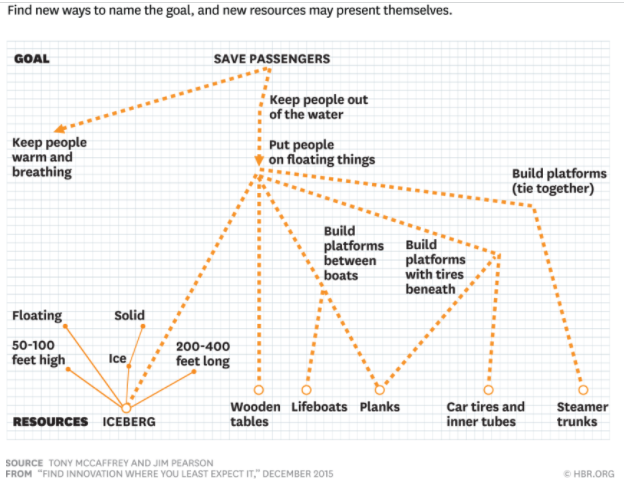Case Study. Brainstorming - The Titanic
We all know the history of the Titanic. On April 14, 1912, the largest passenger ship then collided with an iceberg, as a result of which, out of 2,200 passengers and crew members, only 705 people were saved, pulled from 16 lifeboats by sailors from the other ship named Carpathia.
Consider what could have been done to prevent such a massive catastrophe - but no, it is not about hitting an iceberg, but saving more people.
Data that can be useful in defining the problem and generating solutions:
- The ship was sinking for about 2 hours and 40 minutes;
- "Titanic" after a collision with an iceberg remains steerable for some time;
- The iceberg protrudes above the water surface and is 120 meters long;
- It is estimated that (on board the ship) there were about 40 cars.
Questions:
With the above information, as well as using the techniques you have learned to generate ideas - solve the problem faced by the ship's crew, in particular:
- Define the problem and formulate the goal.
- Identify the most obvious resources necessary to achieve the goal, then combine with the previously formulated goal proposing the most obvious solution.
- Reframe the goal in such a way that it allows you to generate more solutions and allows you to see new resources. Adopt different postures, use the techniques learned during the course (reverse brainstorming, three chair technique, method 635…).
- Suggest options that the ship's crew and passengers could take advantage of if this situation happened again (but forget about the events that connect with the memories of the Titanic's story, and don't limit yourself to the typical uses of items).
Answers:
Proposed solution in accordance with McCaffrey Tony & Pearson Jim (2015). Find Innovation Where You Least Expect It [in:] Harvard Business Review, 12.2015, pp. 82–89. (https://hbr.org/2015/12/find-innovation-where-you-least-expect-it):
Main objective: Save people
The most obvious resource: lifeboats
The most obvious solution: Put people on the lifeboats.
Other terms for the goal to expand the possibilities / perspective for solving the problem:
For example:
"make sure that people are warm and that they have something to breathe all the time" "To prevent people from falling into the water" - we do not limit ourselves in this way. The authors of the text offer many interesting possibilities:

Source: McCaffrey Tony & Pearson Jim (2015). Find Innovation Where You Least Expect It [in:] Harvard Business Review, 12.2015, pp. 82–89. (https://hbr.org/2015/12/find-innovation-where-you-least-expect-it).
Keywords:
Brainstorming

